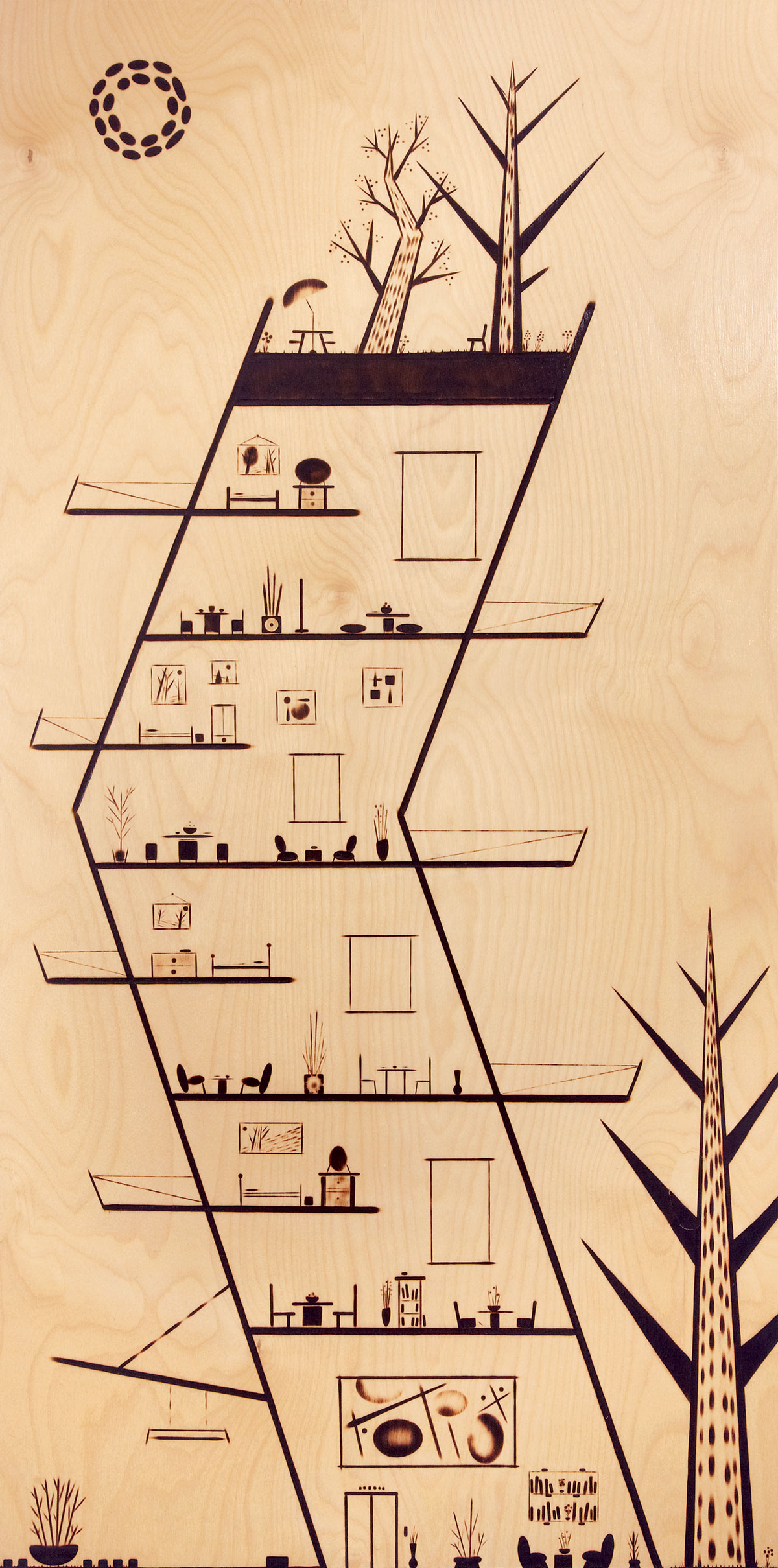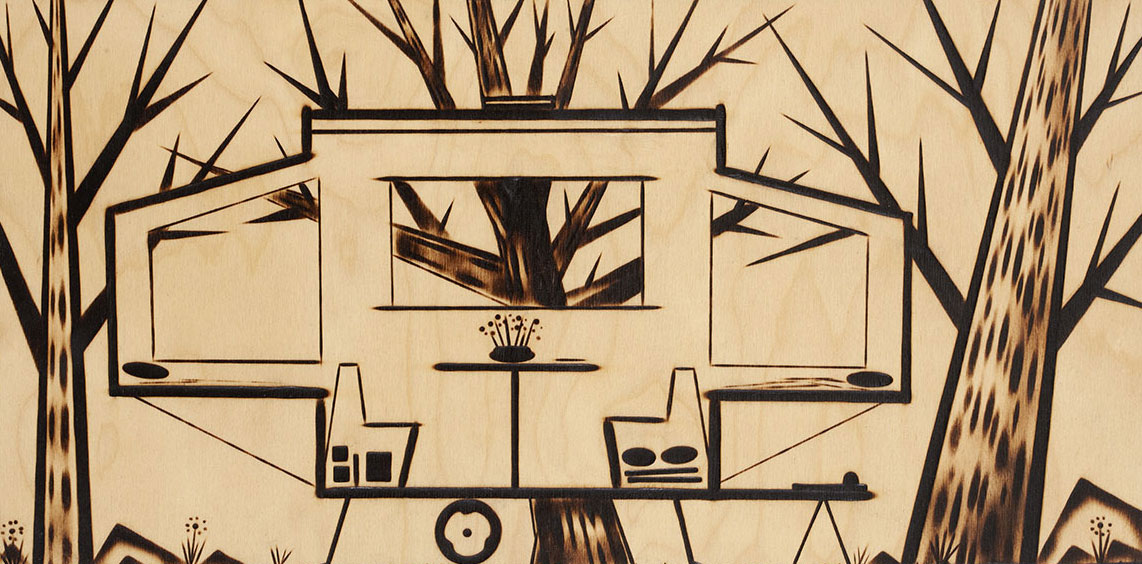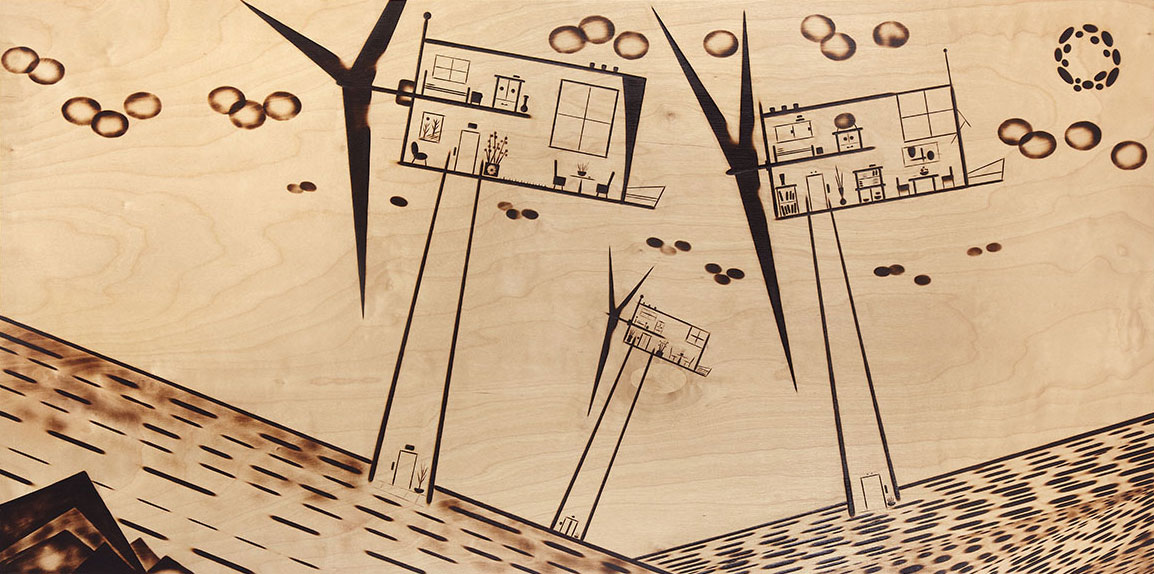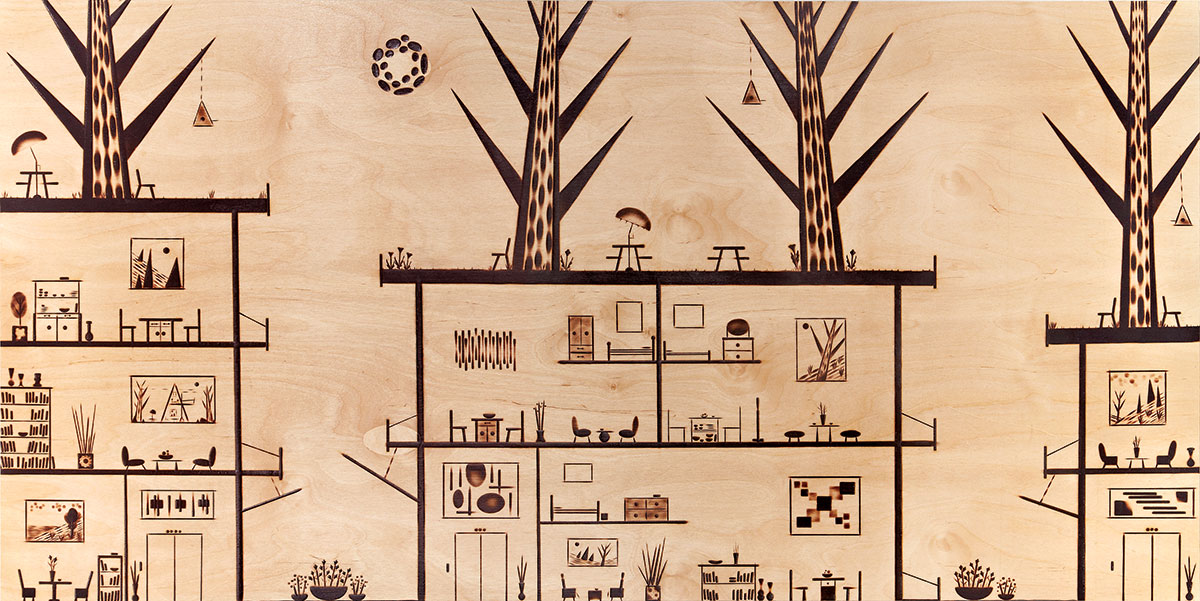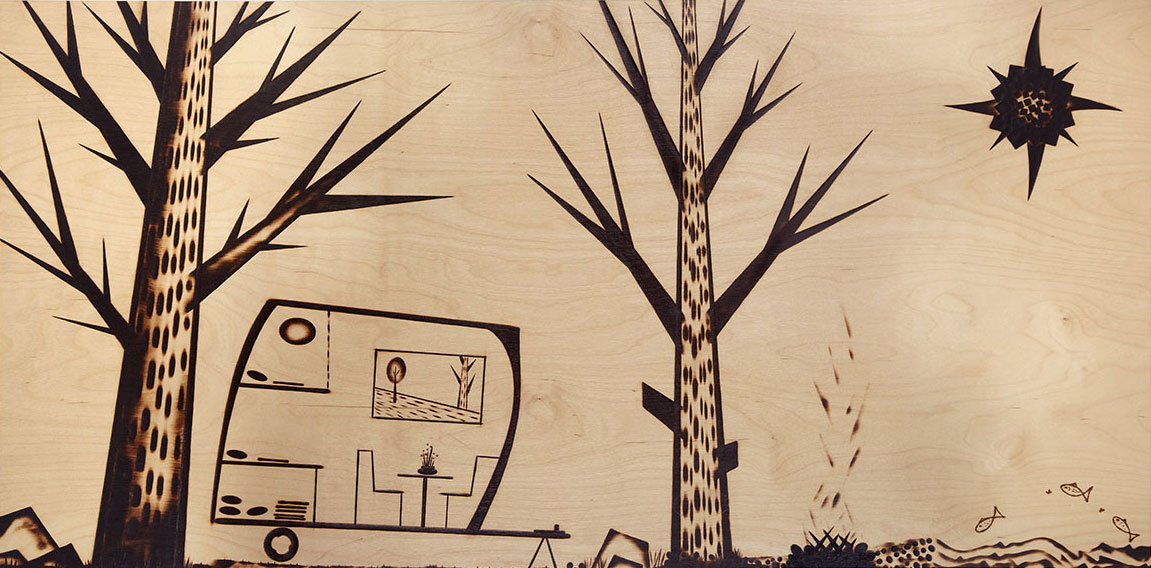
Good art does more than just hang on a wall. It communicates something in the moment you encounter it, whether it’s a painting or a statue or, in the case of Blair McLean’s work, a carefully burned piece of wood depicting an alternate way of life. In McLean’s vision, the utility of a wind turbine moves beyond being simply a form of renewable energy and asks you to stretch your imagination concerning the spaces in which we live. You notice how the favouring of functionality and space evoke a Bauhaus aesthetic, a nod to modernist architecture; how selective scarring transforms an elongated tri- angle into a looming conifer with what looks like the texture of bark, or how a darkly burned series of varied, oblong shapes renders a sun in the sky.
McLean has been burning one thing or another for twenty years. As a young artist, he worked in scarification, a process similar to cattle-branding that burns human skin with heated metal to create an artistic design—a much more permanent type of tattoo. Five years ago, when this hardcore form of body manipulation began to lose his attention, McLean—who also works with the more traditional brush and canvas—switched his medium to wood. “Wood doesn’t complain that it hurts,” he says. “I can design what I want without direction from silly people. I get to own the art.”
McLean’s work has an intricacy, a certain precision in the crisp lines blackened onto pieces of Canadian birch, his preferred canvas. His self-taught technique is a bastardized form of traditional pyrography, in which various sizes of blowtorch stand in for the heated metal wire of a child’s wood-burning kit. Though some strokes are made freehand, the detail so prominent in his work is achieved with the help of two steel rulers set apart at various widths and angles, along with various pieces of shaped and stencil-cut metal. The sanded and lacquered result is as much craftsmanship as it is visual art.
Pieces scattered throughout McLean’s Mirvish Village studio depict a variety of settings, ranging in theme from the abstract to the architectural to the scenic: camping trailers, cross-section views of multi-level modernistic homes, a forest of majestic trees.
Unlike some artists, McLean doesn’t subscribe to the esoteric attitude that makes some art unapproachable and obtuse. Looking at his work evokes instant curiosity. How does he do it? Can I touch it? Why is there a home inside a wind turbine? McLean chats freely about any one series or piece, relishing the questions and conversation each brings. “Don’t you think that if they can put the space shuttle into space that we can live in wind turbines? ” he asks. That’s part of his work’s appeal—it is not only visually captivating, it’s also thoughtful in a way that doesn’t ask why but rather, why not. Why not envision a future where the majesty of a wind turbine is put to even greater use? Why not learn by experiment instead of by rote? Why not make art out of fire?

